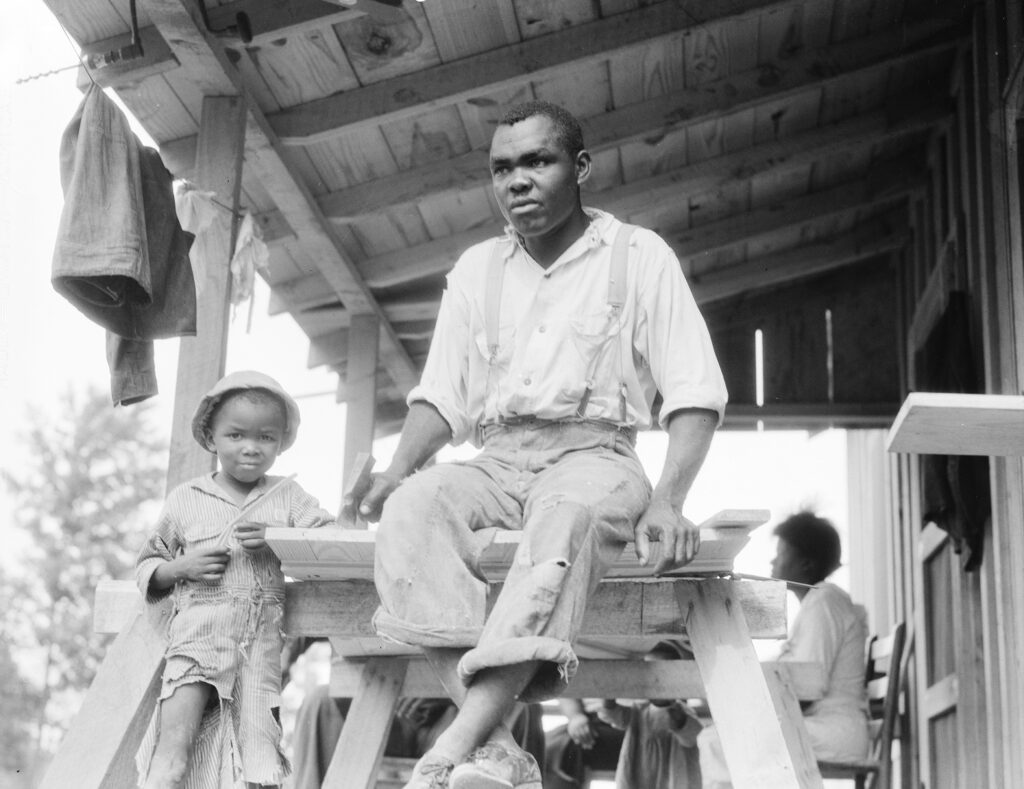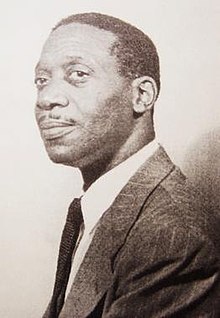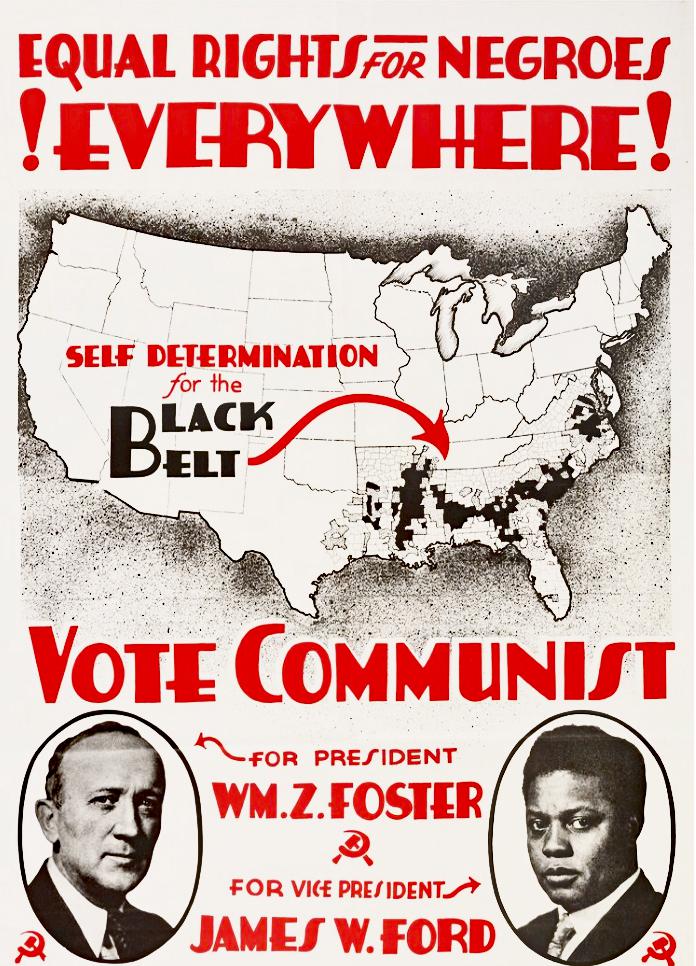Black sharecroppers in the South experienced excruciatingly exploitative and dehumanizing conditions. Sharecropping was a system in which a white landlord supplied propertyless workers, many of them Black, with a place to live and a plot to farm in exchange for a share of the crops (often cotton) produced. The system has been called “slavery by another name” because it developed after the passage of the Thirteenth Amendment to economically re-enslave Black farmers. Landowners typically granted tenants between three-fourths and two-thirds of the price of their crops, minus previous debt––which Black farmers almost always had due to generations of sharecropping. However, the landowners would deduce housing and farming supplies from the sharecropper’s rates at an incredibly high interest, leaving the farmers with practically nothing (3). One sharecropper wrote about his experiences in Southern Worker:
Farmers are in a bad condition in Chambers county. Making one and one-half to two bales of cotton to the plow. Work hard all year on Jim Tucker’s big plantation. We poor Negroes are in starvation. Paid 50c a day for work, 35c and 40c for cotton picking and can’t get money but have to take it up at the store (4).
In 1932, when this article was published, 50c was equivalent to about $10 today. The sharecropping system existed in gradations, with the poorest Black farmers enduring the worst treatment. The “housing” that landowners provided consisted of one-room shacks without electricity, water, or access to bathrooms. The farmers survived on a diet of pork fat, molasses, and cornbread. Malnutrition, rickets, and pellagra were common (5). Literacy was rare for the tenant farmers in some regions because destitute families were forced to have their children pick cotton instead of going to school. Contracts between the landlord and the sharecropper were verbally negotiated every year. Sometimes, the landowner would send his wife to speak to the tenants because if they demanded better pay or improved living conditions, the Black farmers could be arressted, harassed, or lynched for “intimidating” a white woman. While this system was very evidently a new form of chattel slavery, the material conditions in the Black Belt were not static and unchanging; rather they were shaped by continuous resistance to and escape from oppression (6).

The Black masses in the American South constituted an oppressed nation by a Marxist-Leninist definition. Because communist movements were committed to anti-imperialism and ending national oppression, the question of what constitutes a nation is critical for Marxists. In 1917, Lenin described the oppressed nations within the United States, writing that Black people “must be considered a nation, insofar as the equality, won in the Civil War…has in reality been more and more restricted in many respects in the main centers of the Negro population (in the South)…” (7)
In his hugely influential article “Marxism and the National Question,” Stalin wrote:
A nation is a historically constituted, stable community of people, formed on the basis of a common language, territory, economic life, and psychological make-up manifested in a common culture (8).
Marxist-Leninists asserted that nations of people oppressed by imperialism and colonialism have the right to national self-determination. Harry Haywood, Black communist revolutionary and scholar who studied in the Soviet Union, developed the Black Belt Thesis based on Lenin and Stalins’ analyses of nations. In his book Negro Liberation, Haywood argues that Americans in the Black Belt met all these criteria––a common language, territory, economy, etc.––and therefore constituted an oppressed nation. Haywood meticulously proved that:

The secret to unraveling the tangled skein of America’s Negro question lies in its consideration as the issue of an oppressed nation. Within the borders of the United States, and under the jurisdiction of a single central government, there exist not one, but two nations: a dominant white nation, with its Anglo-Saxon hierarchy, and a subject black one.
But what exactly does self-determination mean? Haywood says:
…it means simply the right of the people of a nation to determine their own fate, or destiny, free from forcible intervention from without by the people of another nation.
From the 1930s up until the present day, leftists and bourgeois academics alike have falsely assumed that self-determination for the Black Belt is synonymous with Black separatism and a capitulation to Jim Crow segregation. Haywood refutes these misunderstandings:
Quite definitely, this right includes the right of separation, that is, the right to free political secession from the oppressing nation. But self-determination must not be construed as identical with secession and the establishment of an independent state. The right of nations to secede is an inviolable democratic right, but it is not an obligation, or a duty (9).
In 1928, the calls for Black national self-determination would culminate in an ideological shift that changed the course of the Black sharecroppers movement for freedom.

Notes
(3) Kelley, Robin D.G. Hammer and Hoe: Alabama Communists during the Great Depression. Twenty-Fifth Anniversary Edition. United States: The University of North Carolina Press, 2015. Pg. 35.
(4) Communist Party USA. “Southern Worker.” December 1934. Marxist Internet Archives. Accessed December, 2021. https://www.marxists.org/history/usa/pubs/southernworker/#1931.
(5) Kelley, 35.
(6) Kelley, 36.
(7) Lenin, Collected Works, Vol. 23, pp. 275-276. Retrieved from: “The 1928 Comintern and the Black National Question.” Marxist Internet Archives, https://www.marxists.org/history/erol/1946-1956/roots-revisionism/chapter-13.pdf.
(8) Stalin, Joseph. Joseph Stalin: Marxism and the National Question, Selected Writings and Speeches. New York: International Publishers, 1942.
(9) Haywood, Harry. For a Revolutionary Position on the Negro Question. Chicago: Liberator Press, 1977. Pg. 158.


